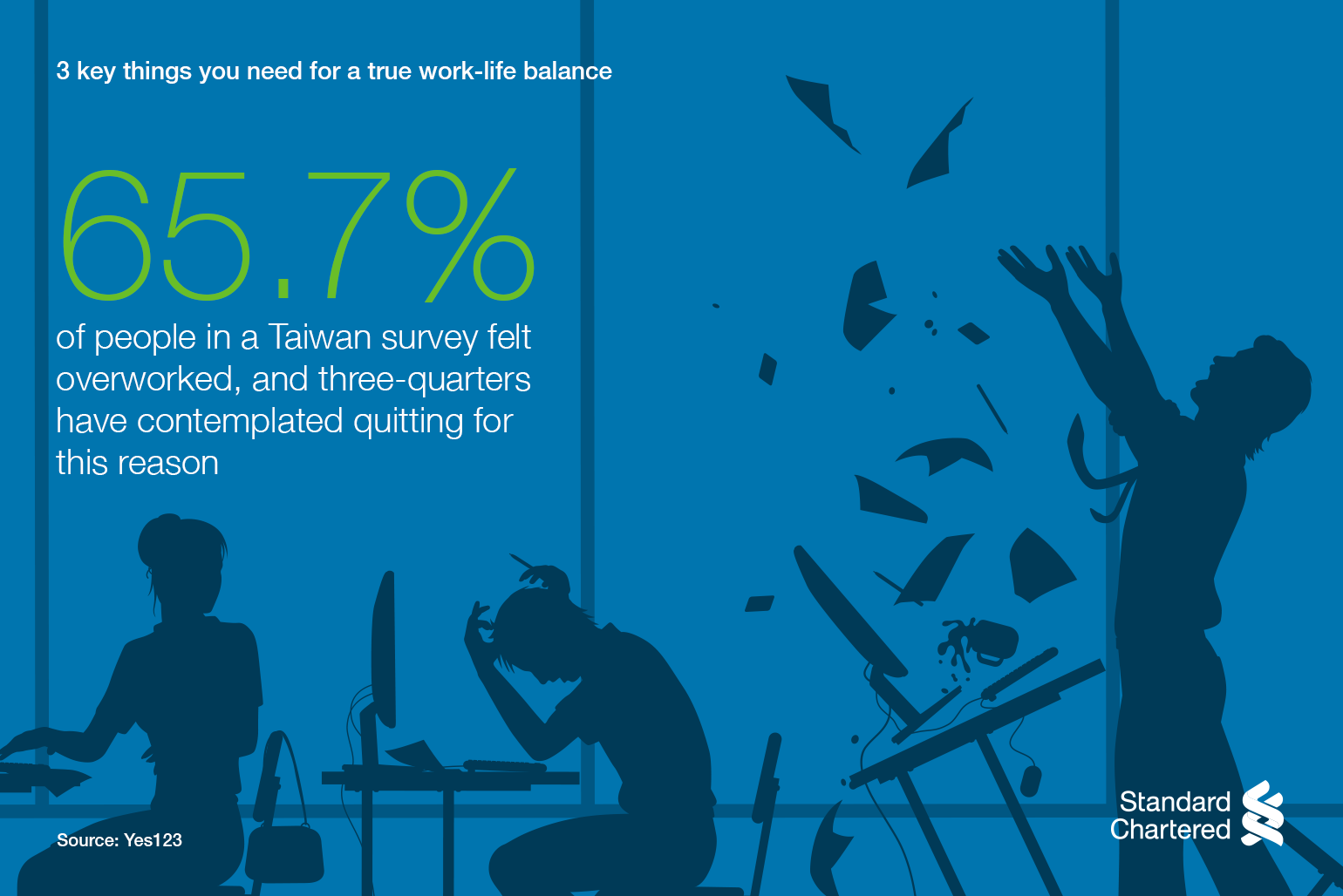3 key things you need for a true work-life balance



Maintaining a work-life balance is essential. The benefits are well-documented: it helps employees reduce stress and improve productivity, and even helps with staff retention for businesses. And yet, a true work-life balance may seem like an impossible feat for many. In fact, a 2019 survey conducted by Taiwanese job bank Yes123 showed that 65.7 per cent of respondents feel overworked, and a staggering three-quarters of respondents have contemplated leaving their jobs for that very reason.
While it may seem hard to break away from today’s “always-on” culture, here are three key things you can look out for, which may help you achieve a better work-life balance.

Technology has undoubtedly changed the way we live — and it’s definitely changing the way we work too. Thanks to the internet, cloud solutions and smart devices, it is now easier than ever for employees to simply plug in and work from home.
Flexible work can help enhance work-life balance as it empowers employees to manage their priorities and personal interests. For example, you can end work earlier on a regular day each week so you can visit an elderly parent or attend to other personal commitments such as volunteering, sport or further education, and make up for that by working slightly longer hours another day.
Of course, work flexibility could also prove to be a double-edged sword as technology blurs the line between work and personal life. To prevent this, be sure to set clear boundaries and always be fully present, whether you’re working or spending time with your friends and family. That means no checking of work emails after working hours, or on days you’re off work!
A variation of flexible work is being given the autonomy to leave the office when your work is done. Lanis Yarzab, Head of Sales, North East Asia, Talent Solutions for LinkedIn, says that, in her personal view, this is one way companies can help their employees maintain a better work-life balance while ensuring productivity.
The key is for employees to focus on getting work done instead of simply working from 9 to 5. “Celebrate results, not hours worked,” she emphasises.

At Standard Chartered, we understand that new parents need time to rest and bond with their baby, which is why we believe in longer paid parental leave. In Taiwan, for example, our employee benefits exceed those that are legally required. Mothers are entitled to 20 weeks of maternity leave (compared to the statutory eight weeks), while fathers get 10 days of paternity leave compared to the statutory five.
“Through an anonymous employee survey [in Taiwan], we found out that 95 per cent of our staff and their families were happy with our parental leave policy,” says a Project Manager for Work & Life Balance for Standard Chartered Taiwan.
She adds, “Our employees can be assured that they [will be] able to keep their jobs after their baby is born, and they can also get enough rest without having to rush back to work.”
To make the transition back to work a smoother process, she says that flexible arrangements are also available. This includes customised working hours and the ability to work from home.

Employee well-being is an area that LinkedIn’s Lanis believes is of great importance when it comes to building work-life balance. Her own view is that companies can do their part to encourage healthy working styles by promoting stress-reducing activities and providing healthy meals.
Workplace wellness programmes not only boost employee well-being, but also make business sense. They help organisations with staff retention — particularly when it comes to one group in particular. Millennials will make up 75 per cent of the global workforce by 2025, and have been shown to be wellness-focused employees who are increasingly demanding better benefits. They also expect their employers to take their well-being into consideration by managing or reducing work stress.

To promote better work-life balance, our Taiwan office regularly holds activities that touch on topics such as mental, physical, financial and social well-being.
For such programmes to work, however, leaders will have to live and breathe the wellness culture of the company.
“You need senior management and the leadership team to lead by example and buy in before you can roll this out,” stresses Lanis. “If it is not a fully integrated plan or leadership is not authentic in messaging about it, it will not work.”
Find out more about how gender equality is changing the workplace.
Only 6.6 per cent of CEOs of Fortune 500 companies are female. But if we start altering the way we…
See how we’re tackling gender inequality.